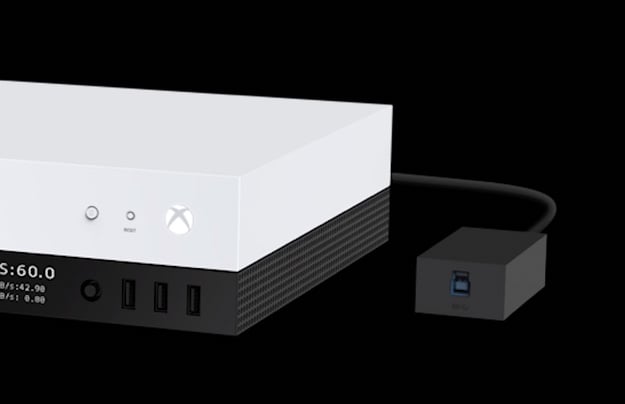Microsoft Shows Off Xbox One Project Scorpio Developer Kits Ahead Of E3
Microsoft is hard at working preparing to launch Project Scorpio, a powerful console that will be capable of playing games at 4K. We are all eager to see what the final version will look like and what tricks it will have up its sleeve. An official unveiling is coming soon, but in the meantime Microsoft talked more about a pre-release version for developers that it's been showing off in recent weeks.
The "Project Scorpio Xbox Developer Kit" is not the same as what will be released to the general public later this year. Microsoft's Larry Hryb, otherwise known as Major Nelson, sat down with Kevin Gammill from the Xbox Engineering team to talk about some of the differences and how they affect game development.
You can check out the full interview in the 6-minute video above, though if you're short on time, we have the skinny. In the video, Gammill reiterates some hardware differences that we already knew about. To recap, the Project Scorpio dev kit has four more compute units than the retail model, which brings the total to 44, and twice as much GDDR5 memory for 24GB in all.
Microsoft also added a 1TB solid state drive to the dev kit. This is to improve developer iteration time. With an SSD onboard, developers can quickly debug, deploy to the kit, get their program up and running, test the kit, and then redo the process over and over again as quick as possible.

Also different on the dev kit is the addition of a second network port. Having a second NIC allows developers to monitor traffic on the main NIC while isolating all of the debug traffic to the second one. This allows them to see what effect their code is having on network performance without having to factor in non-gameplay performance that home consumers will not have to worry about.
The cooling on this latest dev kit is different from previous console dev kits, as well. Whereas previous generation dev kits directed airflow towards the top of the console, Microsoft changed the design so that air is pulled in from the back and expelled out the sides. This seemingly minor changes makes it possible to stack Project Scropio dev kits up to 10 units high.

Developers also get access to a transfer device that is capable of shuttling data at up to 450MB/s. This cuts down on deployment time considerably—instead of taking up to 20 minutes to deploy a full build from PC to console, the transfer device makes it happen in about 4 minutes. The savings can quickly add up when debugging and trying to optimize code.
While it seems like a tease for Microsoft to provide more powerful hardware than what consumers will have access to, there is good reason for it.

"At a high level, it's much easier for a game developer to come in higher and tune down, than come in lower and tune up. Or nail it. That just rarely happens,” Gammill said previously. "Our overarching design principle was to make it easy for devs to hit our goals: 4K, 4K textures, rock steady framerates, HDR, wide color gamut, and spatial audio."
So there you have it, the Project Scorpio Development Kit in a nutshell. As to the consumer model, it is widely expected that Microsoft will make an official unveil at this year's E3 conference during the company's scheduled June 11 media briefing. We can hardly wait.


